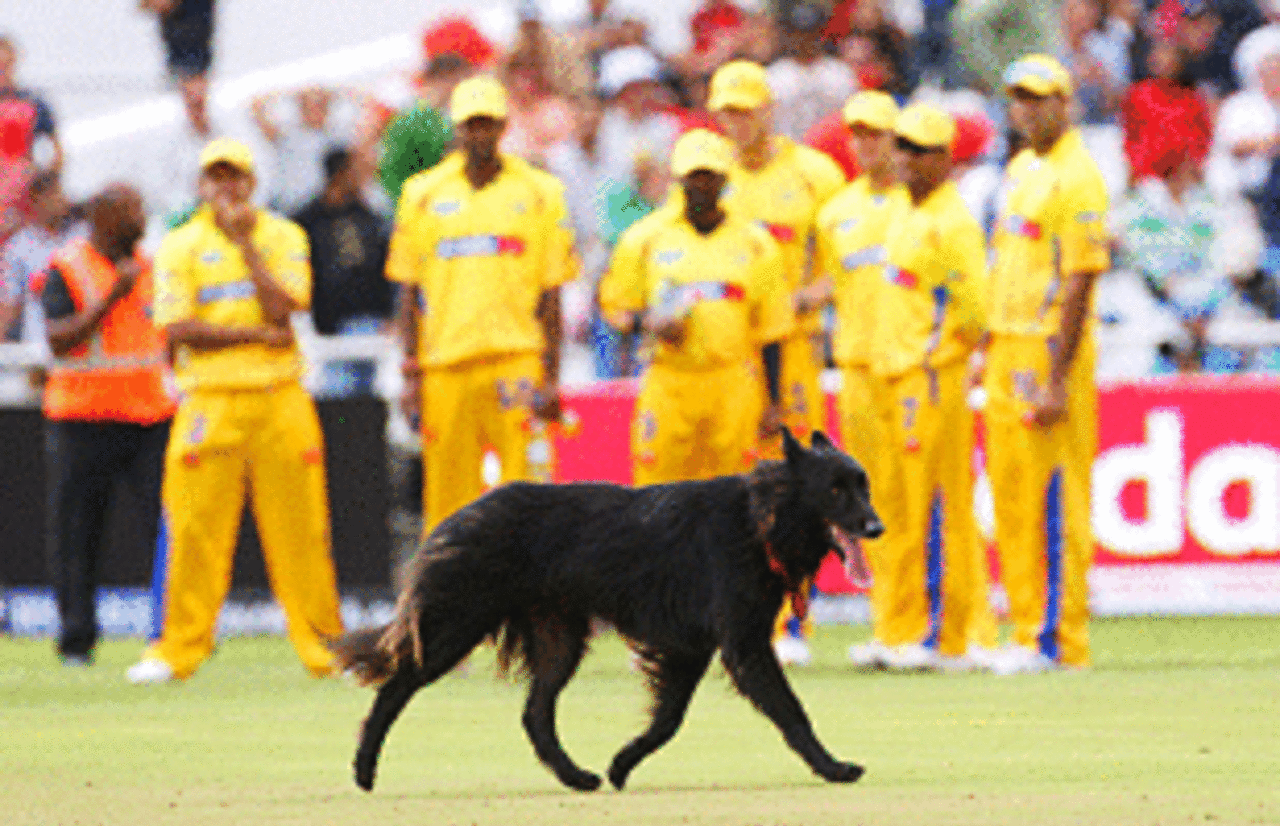Time-out or sell-out?
We asked six insiders for their opinion on Twenty20's latest so-called innovation, the 10-minute strategy break

In times of dogs and bad floodlights holding up play, do we need a strategy break as well? • Getty Images
Former New Zealand opener, now a commentator
From the commentator's point of view you want continuous action wherever you can. One of the nice things about Twenty20 is, you have a quick break between the innings, and it all happens so quickly. Now with the time-out scenario you have got to fill that with some stuff: so you will have ad breaks, you can do a bit of quick analysis, and I'm sure you can enhance your own presentation. This is still in a trial phase, and I'm all for things when you are looking to improve entertainment. It is just another chance to advertise. It is not great. But money makes things go at the end of the day and money makes IPL run, too.
Bangalore Royal Challengers coach
Spectators are the ones they need to be keeping their focus on during these breaks. What you need to do is check if this break is going to keep the spectators interested, because what do they do during these minutes? The organisers could think of adding value to the entertainment by, maybe, doing interviews with four or five players in the change rooms, which can then be shown during these intervals. This is an opportunity for the officials to see this as a moment to catch up with people, and give them something they cannot get hold of: signing autographs or something.
Mumbai Indians offspinner
It is like 50-50. If you are going for a lot of runs then it is definitely helpful, but if you are doing well with the ball and the batsman is struggling it can break your rhythm, too.
Former South African cricket board president
The reality now is that cricket is a highly commercial entity. There is big money in cricket today, and much of is emanating from India. The organisers are not only aiming to provide a fantastic spectacle for the spectators, but they are also there to maximise the revenues for the game. You can't fault them on that. The problem they have is, because of the shortened version of the game the number of ad breaks are less as compared to the one-dayers and Tests. So they are trying to get more airtime for more commercial ads to be placed.
ICC match referee
Technically, for the player it could be an advantage or disadvantage: if your team is not doing well, the break is very welcome as that helps stop the momentum of the opponents. But if your team is doing well, it may be seen as a hindrance, where you could lose your advantage. It is a new experiment and remains to be seen how it is expected. If it is a real pain, some changes may be carried out.
Tournament director, ICC World Twenty20
I am not sure of the reasons behind it; whether it is commercial or for cricket-playing reasons. From our perspective, the idea is that the game needs to have that momentum. It needs to keep the pace and the momentum going. The playing conditions don't stipulate for a break in this World Twenty20, and I would like to see the game continue, rather than being broken up all over.
Nagraj Gollapudi is an assistant editor at Cricinfo